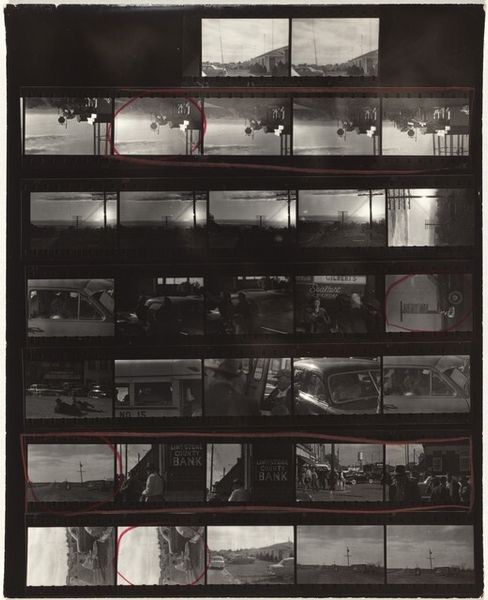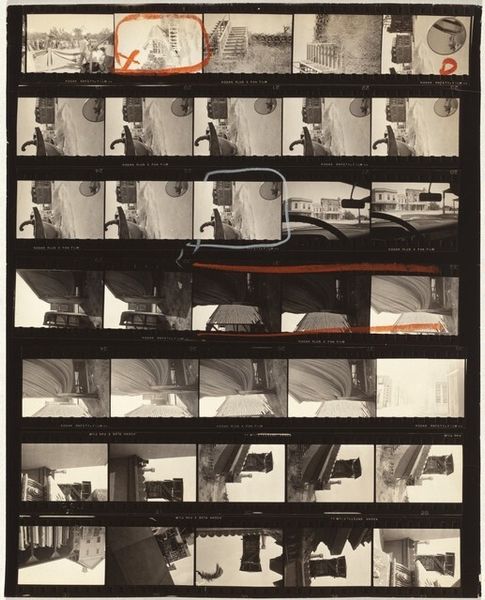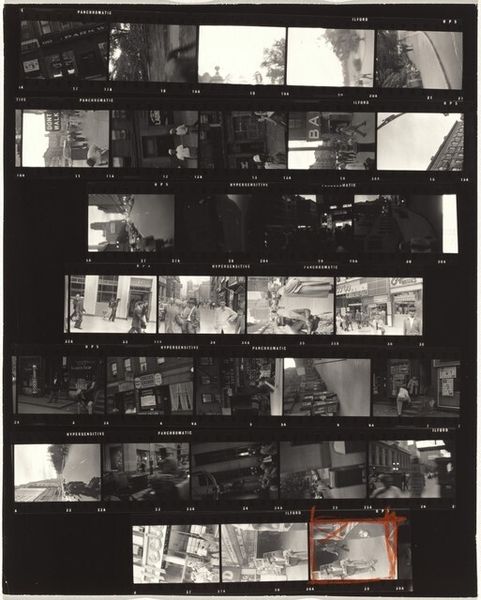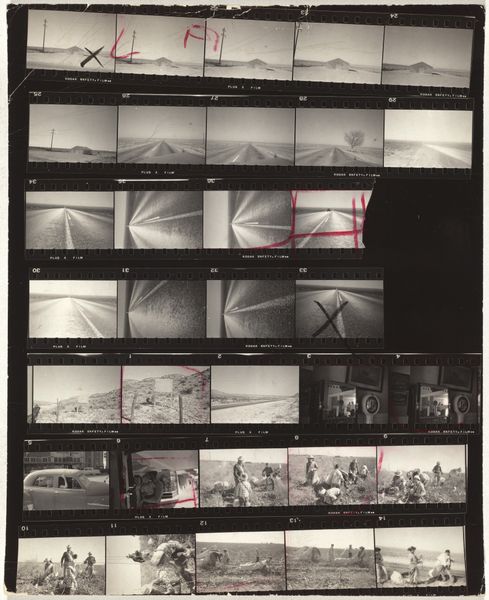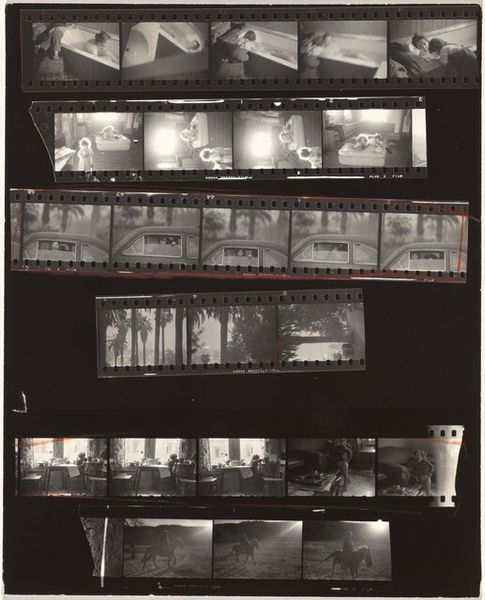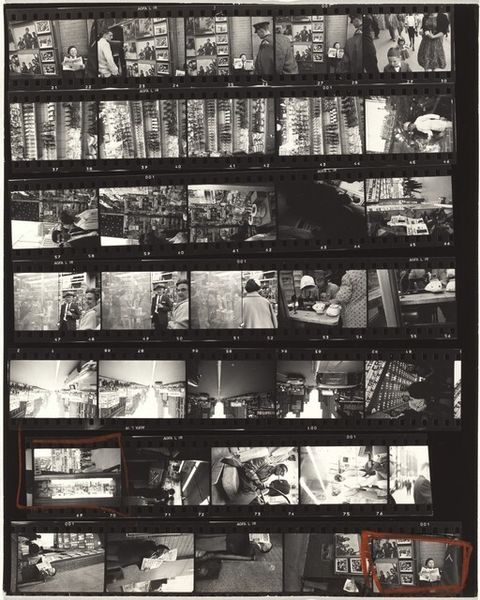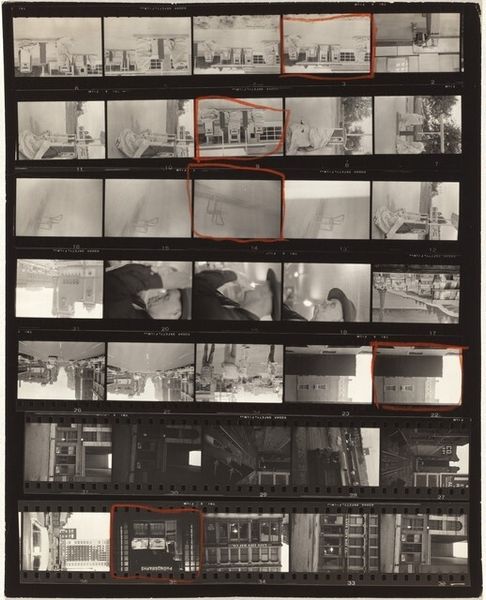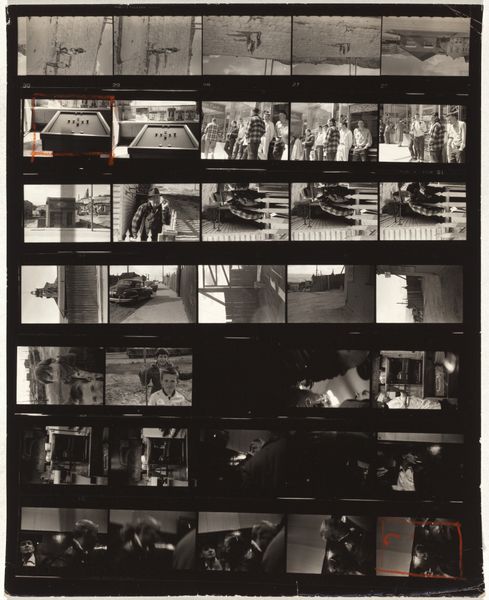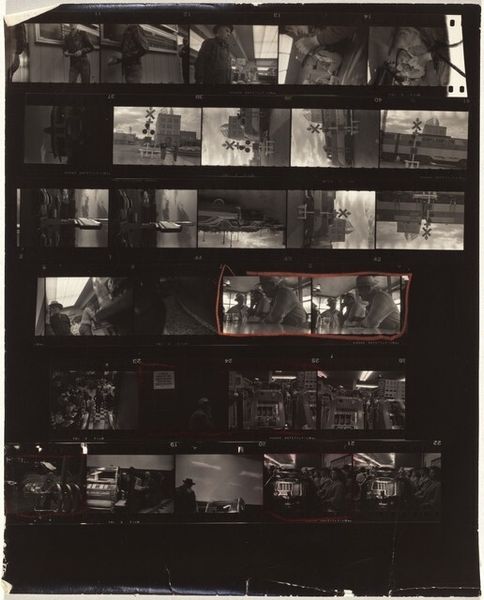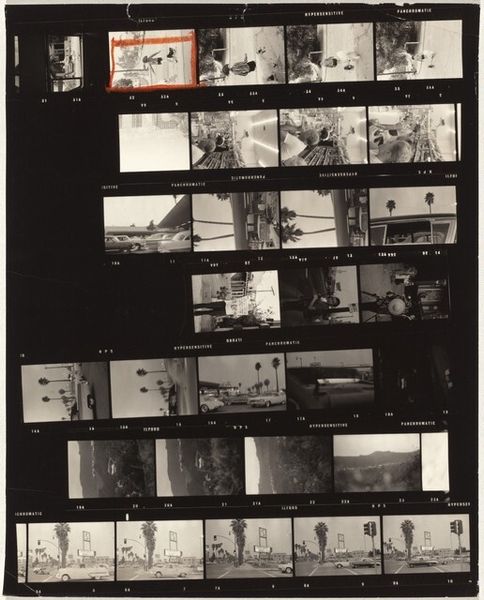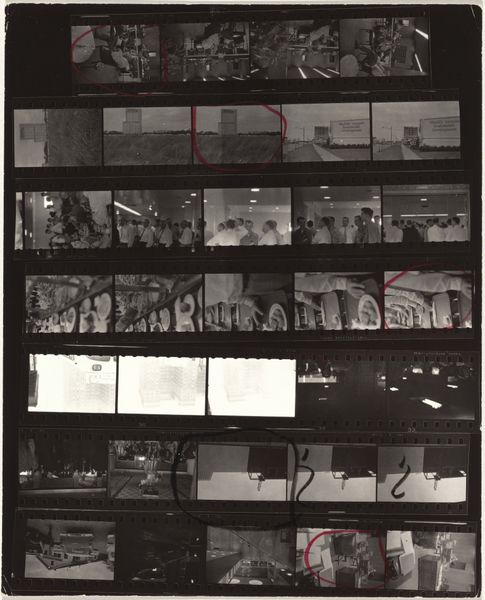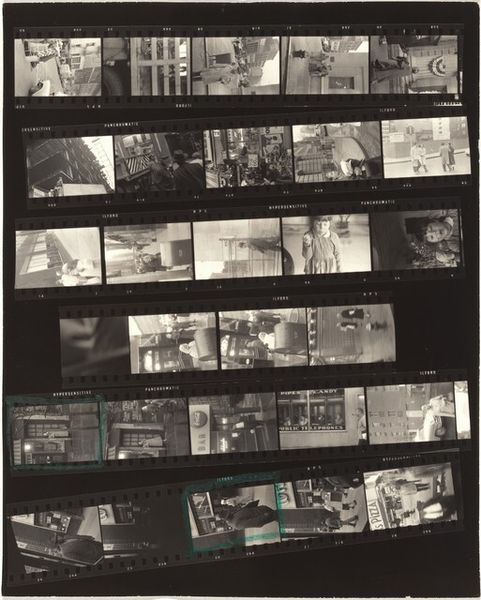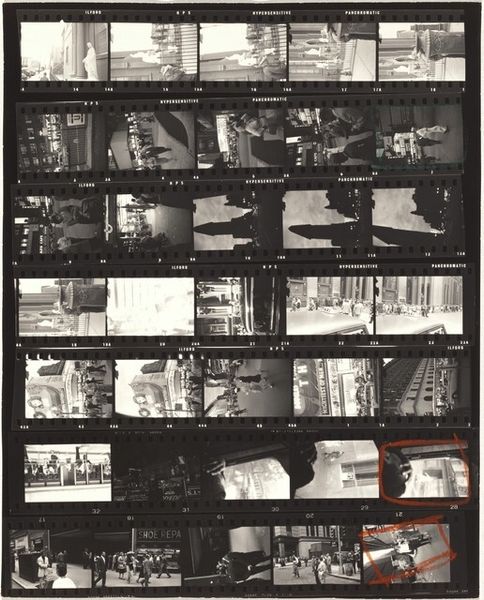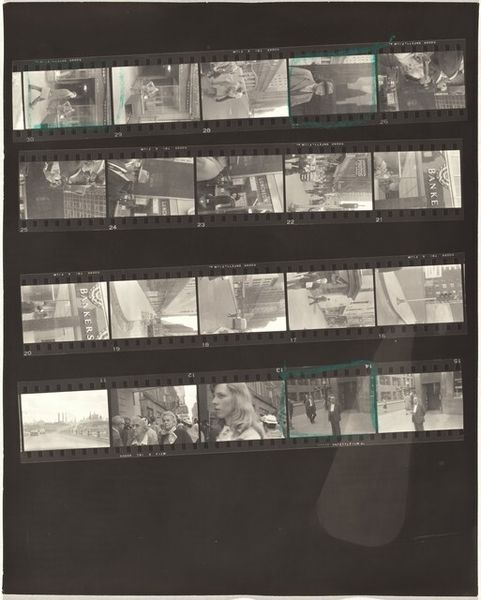
Guggenheim 393/Americans 83--U.S. 90 en route to Del Rio, Texas 1955
0:00
0:00
Dimensions: overall: 25.4 x 20.5 cm (10 x 8 1/16 in.)
Copyright: National Gallery of Art: CC0 1.0
Curator: Robert Frank’s 1955 contact print, “Guggenheim 393/Americans 83--U.S. 90 en route to Del Rio, Texas,” really catches the eye. What do you make of its visual texture? Editor: Well, the first thing that strikes me is the grittiness of it. It’s not polished; it's raw, almost like a document of process rather than a finished art piece. The black and white amplifies this sense, setting a specific tone that speaks to its period, and feels like an unvarnished look into the every day. Curator: Indeed. It's a contact sheet, after all – typically a utilitarian object. By presenting this, Frank collapses the boundary between artistic creation and the work behind the scenes, bringing visibility to his working method. You can see red grease pencil marks made directly onto the filmstrip to indicate selections, a rather direct means of artmaking. Editor: Right, and those selections must have seemed radical then. It looks like scenes of roadside America, very different from idealized imagery you'd find promoted in media at the time. There’s a narrative about transportation, the trucking industry – what's the cultural significance you see? Curator: Frank traveled across America in 1955 and 1956, funded by a Guggenheim Fellowship. He explored themes of social class, racial segregation, and consumerism that were emerging at mid-century. These images suggest the rise of the transportation and logistics industries, which transformed labor. By calling attention to this, the art questions where America placed value and also serves to preserve overlooked history. Editor: Seeing the artist's hand via these markings enhances that raw feel you mentioned earlier, emphasizing an almost nonchalant quality—as if the decisive moment happens almost accidentally! And to make such a scene into a key work—very telling about its stance regarding American culture at the time. Curator: Precisely. Frank's ability to elevate these mundane aspects reflects how photography could reshape social narratives and even challenge popular opinion in visual culture. Editor: I find I'm drawn to what is included as much as to the artist’s choices: the diners, the cars…these very elements contribute to a deeper narrative on daily life, as experienced by individuals beyond any ideal vision. Curator: Ultimately, pieces such as this photograph shed light on overlooked processes central to how the country works—literally, and artistically. Editor: Right. This definitely adds to our understanding not just of one man’s journey but, perhaps, America's transition towards what it has become today.
Comments
No comments
Be the first to comment and join the conversation on the ultimate creative platform.
